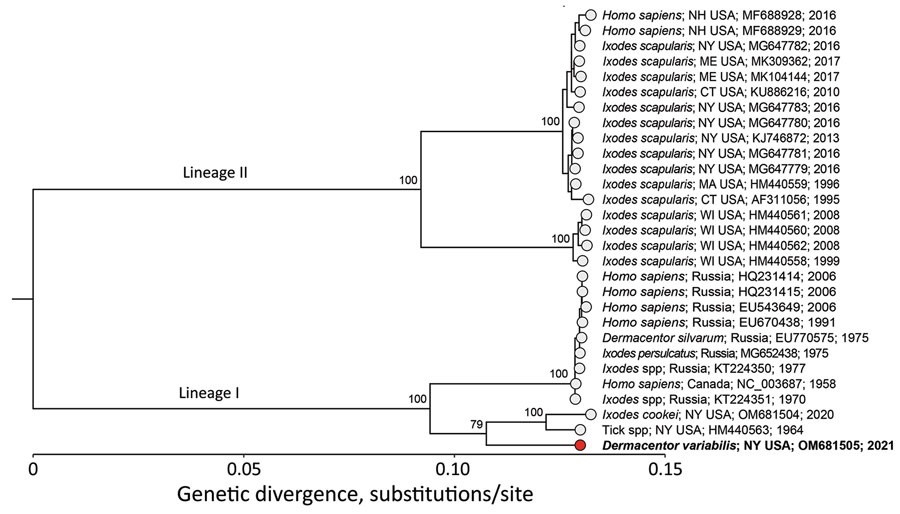Volume 29, Number 2—February 2023
Dispatch
Powassan Virus Lineage I in Field-Collected Dermacentor variabilis Ticks, New York, USA
Figure

Figure. Maximum-likelihood phylogenetic tree of Powassan virus lineage I and II from Dermacentor variabilis ticks collected in New York, USA, and reference sequences. Phylogenetic analysis of the coding sequence (genome positions 108–10,352) of 29 publicly available Powassan lineage I and II genomes. Red circle and bold text indicate the virus sequenced in this study from the D. variabilis ticks; the virus is most closely related to other lineage I sequences from ticks in New York. Sequence names consist of host; location; GenBank accession number; year.
1These first authors contributed equally to this article.
Page created: December 13, 2022
Page updated: January 21, 2023
Page reviewed: January 21, 2023
The conclusions, findings, and opinions expressed by authors contributing to this journal do not necessarily reflect the official position of the U.S. Department of Health and Human Services, the Public Health Service, the Centers for Disease Control and Prevention, or the authors' affiliated institutions. Use of trade names is for identification only and does not imply endorsement by any of the groups named above.